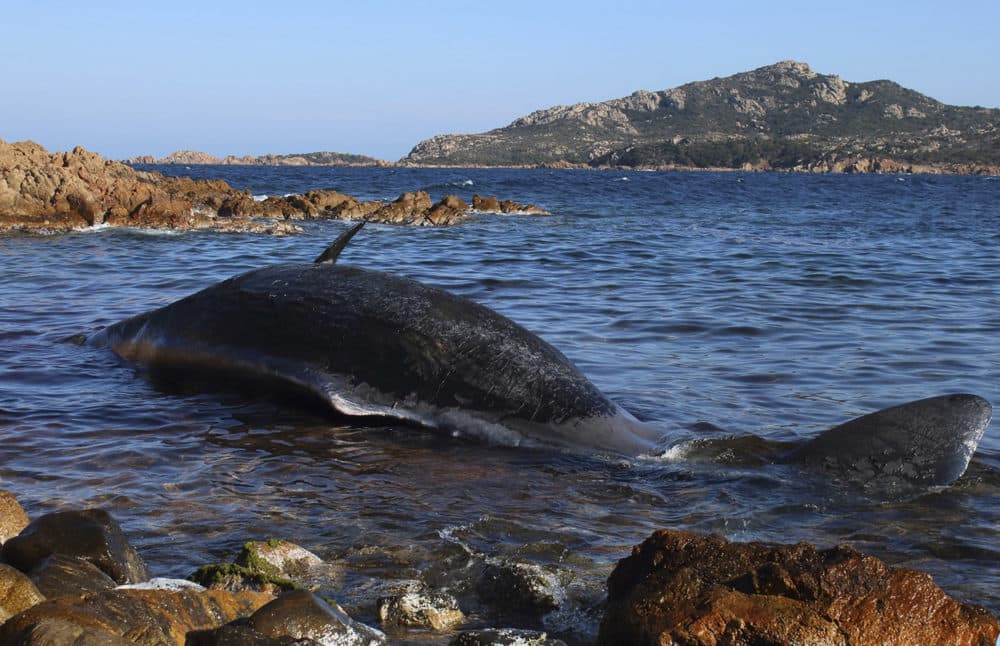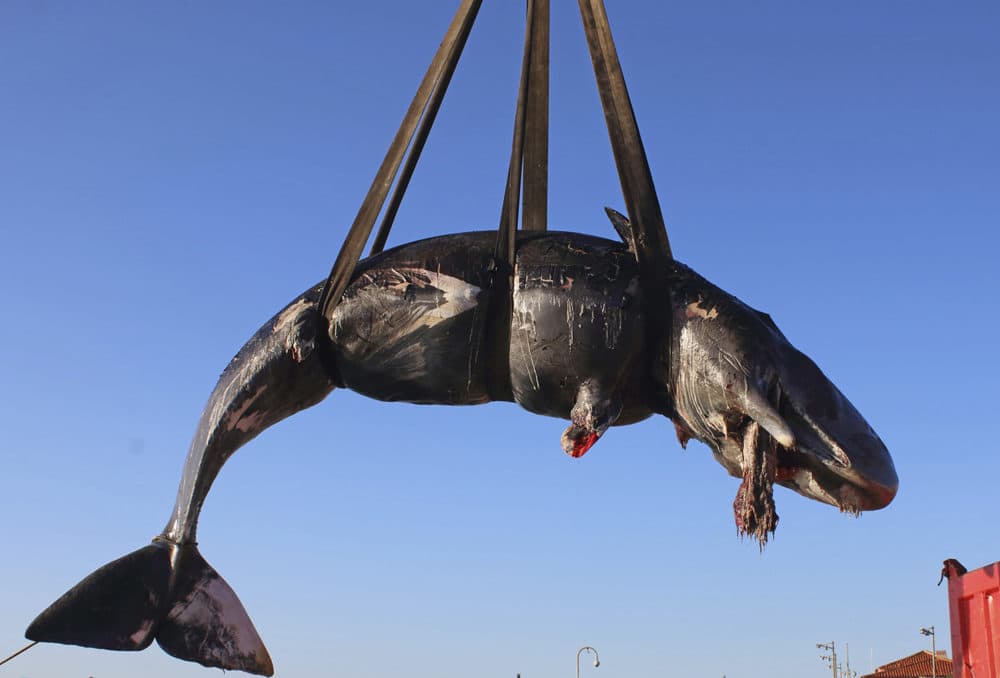Advertisement
Pregnant Whale Found Dead Highlights Issue Of Plastic Litter In Oceans

A pregnant whale was found dead last week in Italy with nearly 50 pounds of plastic in her stomach. The case highlights a disturbing trend of how plastic pollution of the oceans is impacting wildlife.
Vicki Croke (@VickiCroke), host of WBUR's The Wild Life blog, says there was more trash found in the whale’s stomach than food items.
“A necropsy is being done to determine the exact cause of death, but considering the pounds of plastic bags, plates, fishing nets and more twisted up in her belly, scientists say it's obvious trash was at least a factor,” Croke tells Here & Now’s Jeremy Hobson.

Interview Highlights
On other examples of dead whales in recent months
“Just last month, it was a dead whale in the Philippines with nearly 90 pounds of plastic ingested. The images from these cases are shocking. Often we see pictures of the stomach contents, a heap of plastic with very identifiable items.”
On other marine animals affected by plastic in the ocean
“Turtles, for instance, may consume plastic bags which can make them sick or kill them. It may interfere with their ability to dive. They might become tightly entangled in ocean refuse and lose flippers. Carl Safina, the writer, scientist [and] naturalist, happens to be a friend of mine [and] who's the founder of The Sophina Center, has described seeing an albatross coughing up a toothbrush while she was trying to feed her chick. And there have been photos of dead chicks whose little bodies were full of plastic trash including jar lids and lighters. But in the horrible news about the tons of plastic refuse in the oceans today, whales are the headliners. They are big and beautiful. When they ingest plastic and it’s tallied, the totals are enormous.”
On how much plastic is in the ocean
“Well we have some estimates to go off of. A study reported in the journal Nature in 2015 has often cited an estimated 8 million tons of plastic trash goes into the ocean every year. Some estimates say that 60 percent of seabirds species have ingested plastic and people even try to find out thresholds like, how many pieces of plastic a turtle can eat before health is affected?”
On how to try to stop marine animals deaths from happening
“Everyone says it's happening more often. But it's pretty sobering that we don't hear about a number of them. We can't even estimate how many of those are. But environmentalists [and] conservationists are looking for fast-action, [such as] stepping up recycling, more biodegradable materials, less plastic, and for smart, widespread and innovative efforts at cleanup. We'll have to see what kind of support they can get for these efforts.”
Ashley Bailey produced and edited this interview for broadcast with Todd Mundt. Serena McMahon adapted it for the web.
This segment aired on April 4, 2019.
